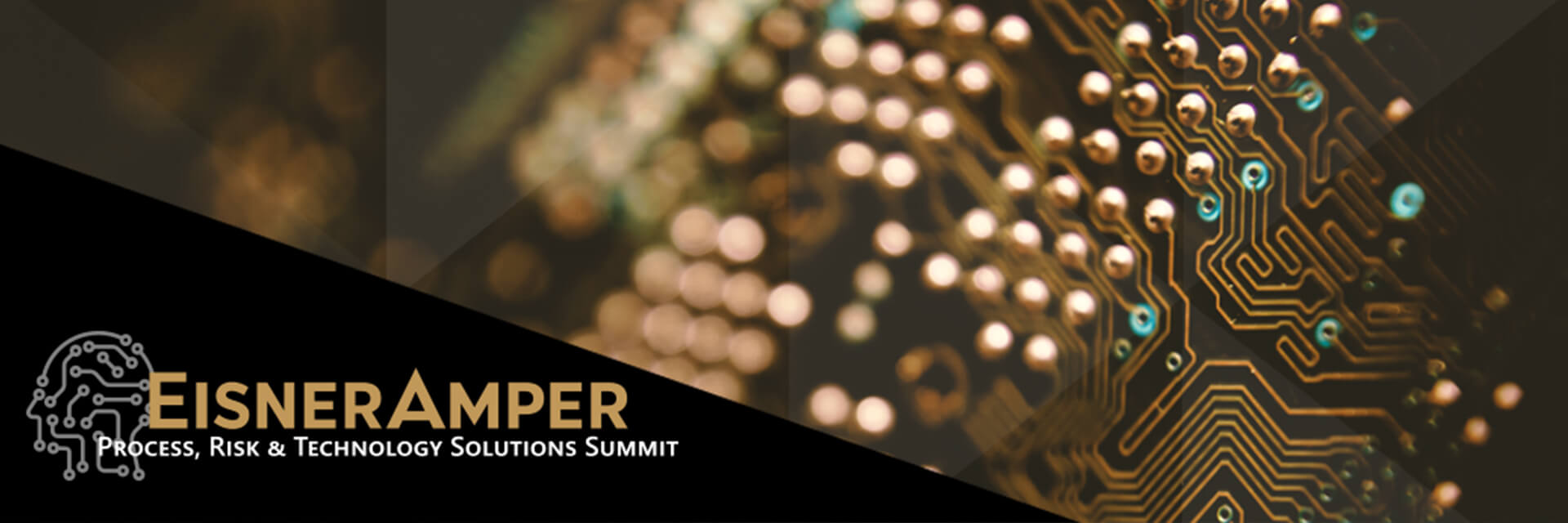
What’s Happening in Audit Regulation
- Published
- Jul 15, 2019
- Share
As technology and automation advance, regulatory agencies must not only keep up with but also outpace them in an effort to predict and regulate the reporting process as it changes. At EisnerAmper’s recent Process Risk and Technology Solutions (PRTS) Summit “Adapting to Change in a World of Evolving Technology,” Jeanette M. Franzel, a former member of the Public Company Accounting Oversight Board (PCAOB), delivered a keynote speech where she emphasized the importance of this and how disruption and change will shape the public company financial reporting process. Ms. Franzel shared the following perspectives.
EisnerAmper: With more technology, who will bring standardization?
Franzel: The PCAOB is focusing now, more than ever before, on standards that affect quality control, compliance with laws, and regulations -- all connected to data and technology. In 2019, they are specifically updating technology projects, inspection findings, new auditor reporting models, systems of quality controls, and more. This growth and reaction to an ever-changing environment are key factors on how the PCAOB will continue to ensure the accuracy and relevancy of public company financial reporting. Regulation by all government agencies that have a hand in policy-making and management of audits is more important now than ever before.
EisnerAmper: How will data and technology be regulated for the future?
Franzel: Data and technology are moving at a speed historically unheard of. The audit function’s reliance on these systems is increasingly more crucial for auditors to understand and government entities to regulate. With the use of robotics process automation (RPA) and the creation of “bots,” internal and external auditors must rely on one another. Internal auditors must ensure that external auditors understand a company’s technology usages and how they affect the bottom lines. External auditors, on the other hand, must be prepared to audit these applications and collect and interpret the information they generate. The use of technology and its fast-moving flow of information will put stress on management and auditors alike. As the uses of data and technology continue to evolve, questions about the security and audit practices surrounding them will have to be answered. Accounting and audit standards will have to keep pace with the new technologies and, in response, the PCAOB has initiated its Auditing Standards Research Projects initiative to investigate the impact of technology. Through a focus on the audit inspection process, the goal is to see how the accounting profession is responding to these technological developments. A new Standing Advisory Group has been created to assist PCAOB staff in obtaining insights and they are prioritizing data analytics and artificial intelligence. The PCAOB’s goal is ensure the creation and maintenance of these standards and enforcing the rule to auditors and clients.
The PCAOB is moving forward with the goal of creating leading standards that will help orient auditors to the effects of technology on accounting. Auditors who have the ability to utilize technology, analytics, and the basic skills of their profession will be at an advantage as the usage of technology rapidly increases. To advance in the digital age, it is important to remember three key areas for evolving in the digital world: basic digital literacy, understanding technology and data, and the ability to analyze complex information and address it in a creative way that assures the highest standards around financial reporting.
Process Risk and Technology Solutions Summit Blog Series
Contact EisnerAmper
If you have any questions, we'd like to hear from you.
Receive the latest business insights, analysis, and perspectives from EisnerAmper professionals.










